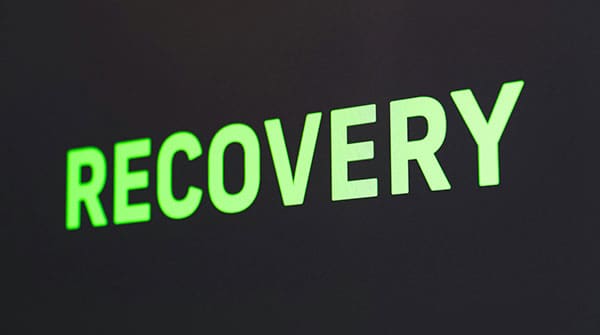It’s time to wean Alberta off its non-renewable resource revenue addiction once and for all
 In her televised address to Albertans on Feb. 21, Alberta Premier Danielle Smith committed to “invest in the Heritage Fund annually; strategically pay down maturing debt; and slowly but surely wean our province’s budget off the volatile roller coaster of (non-renewable) resource revenues … Prior to the end of this year, our government will publicly release a long-term financial plan charting a path to a Heritage Fund of between $250 and $400 billion by the year 2050.”
In her televised address to Albertans on Feb. 21, Alberta Premier Danielle Smith committed to “invest in the Heritage Fund annually; strategically pay down maturing debt; and slowly but surely wean our province’s budget off the volatile roller coaster of (non-renewable) resource revenues … Prior to the end of this year, our government will publicly release a long-term financial plan charting a path to a Heritage Fund of between $250 and $400 billion by the year 2050.”
This is a laudable goal designed to secure the province’s long-term fiscal future. The question becomes, what is the best way of getting there? I believe the best way of weaning Alberta off of non-renewable resource revenues (NRR) while paying down debt and generating long-term savings is to gradually withdraw the ability of the government to use any NRR for current spending purposes.
When former Premier Peter Lougheed established the Heritage Fund in the 1970s, he had the foresight to take 30 percent of non-renewable resource revenues (NRR) “off-the-top” and allocate it to the Heritage Fund while also permitting the Fund to retain all its net investment income each year.
 Photo by Martin Sanchez |
| Related Stories |
| Alberta on the brink: Fiscal sustainability at risk without major adjustments
|
| A simple way to restore trust in Alberta’s revenue forecasting system
|
What if we adopted a similar type of fiscal rule today but went even further, with the goal of eliminating the government’s ability to use any NRR for current spending purposes?
In my projected analysis, I apply a long-term fiscal outlook for Alberta extending to 2050, where operating spending growth is capped at an average of two percent annually. My analysis implements a variation of the “Lougheed fiscal rule,” progressively dedicating a larger share of non-renewable resource revenues (NRR) from 2024-25 to 2049-50 for three main objectives: reducing taxpayer-supported debt, enhancing the Heritage Fund, and establishing the Alberta Fund, (to be used for debt repayment; additional deposits into the Heritage Fund; or one-time initiatives that do not lead to permanent increases in government spending).
As established under Alberta’s current fiscal framework, all net investment income earned annually by the Heritage Fund will be retained in the Fund rather than sent to the province’s General Revenue Fund (GRF). Under the long-term fiscal outlook, NRR gradually increases from about $17 billion in 2024-25 to $17.8 billion in 2029-30 and $21.8 billion by 2049-50
The NRR taken “off-the-top” under this fiscal rule is first allocated 75 percent to taxpayer-supported debt repayment, with the remaining 25 percent divided equally between the Heritage Fund and the Alberta Fund. Once the taxpayer-supported debt is eliminated, NRR “off-the-top” is allocated 75 percent to the Heritage Fund and 25 percent to the Alberta Fund.
The results of simulating this long-term fiscal policy scenario are quite dramatic and appear to be aligned with Premier Smith’s fiscal goals. From taking 10 percent of NRR “off-the-top” in 2024-25, the percentage of NRR taken “off-the-top” increases to nearly 50 percent by 2030-31. By 2038-39, 100 percent of NRR (nearly $20 billion of annual NRR) will be taken “off-the-top,” and Alberta will be able to wean itself off of using NRR to support current spending. From 2038-39 to 2049-50, all NRR, each year, is allocated to debt repayment, building up the Heritage Fund, and establishing the Alberta Fund.
With this variation of the “Lougheed fiscal rule” in place, Alberta is able to eliminate its $76 billion taxpayer-supported debt by 2038-39. The assets in the Heritage Fund rise from $24.6 billion as of Mar. 31, 2024, to $355.2 billion as of Mar. 31, 2050, an increase of over $330 billion. Annual Heritage Fund net earnings in 2049-50 are estimated at about $21.3 billion, nearly equal to the $21.8 billion in estimated NRR received by the Alberta government that year. Meanwhile, the Alberta Fund balance reaches $112.5 billion as of Mar. 31, 2050.
Fiscal discipline will be critical to meeting Premier Smith’s long-term fiscal goals. Not only does that include holding the teo percent line on annual operating spending increases and initiating discussions about diversifying revenue streams, but it also requires removing, over time, the government’s ability to use any NRR to support spending.
Premier Lougheed’s initial rule of taking some NRR “off the table” and devoting it to the Heritage Fund was a good idea in the 1970s and is a good idea today, but let’s take it a step further and wean the government off of NRR, once and for all.
Lennie Kaplan is a former senior manager in the Fiscal and Economic Policy Division of Alberta’s Ministry of Treasury Board and Finance (TB&F), where, among other duties, he examined best practices in fiscal frameworks for oil and gas-producing jurisdictions, including savings strategies for non-renewable resource revenues (NRR).
For interview requests, click here.
The opinions expressed by our columnists and contributors are theirs alone and do not inherently or expressly reflect the views of our publication.
© Troy Media
Troy Media is an editorial content provider to media outlets and its own hosted community news outlets across Canada.

